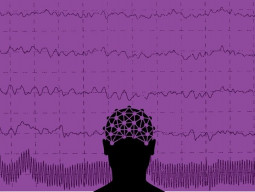
Voices from one or more people started to erupt in his mind telling him that his existence was futile. They said he deserved nothing and made him feel that the people around him intended on murdering him. After his parents decided to seek professional help, Amir was diagnosed with Schizophrenia.
His fate is shared with 1% of the world’s population, according to World Health Mental Federation (WHMF). With less awareness of the disorder, especially in Pakistan where psychological disorders or mental illnesses border on social taboos, it is becoming increasingly difficult to treat schizophrenic patients with the medical help they require.
Understanding Schizophrenia
Schizophrenia is often described as a disorder in which the mind becomes the biggest enemy of the schizophrenic individual. It affects the way a person acts, thinks and sees the world, making them lose touch with reality. Just like Amir’s condition, paranoia sets in and people feel like a conspiracy is being plotted against them. They may feel like they are being watched or that everyone wants to harm them. “These aspects make the mundane activities of life appear increasingly intricate for the patients,” says Dr Amanat Mohsin, a psychiatrist at the Gulshan Psychiatrist Hospital in Karachi. The increasing number of patients and severity of the disease has ranked the disorder as the third most disabling condition in the UK’s leading medical journal, The Lancet Journal.
Even though, it is not absolutely clear as to why an individual may suddenly start hallucinating or show other symptoms of Schizophrenia, according to studies, one of the factors may be genetic. In fact, genetics may have a 42% to 60% impact on the development of the condition. If one of the parents is afflicted with schizophrenia, there is a 13% chance for a child to contract the disorder. The risk is, however, multiplied three-folds if both parents are affected by the condition. While men may come forth in late teens or early twenties, women exhibit the condition in their late twenties to early thirties, according to WHMF.
In addition to this, the following environmental and social factors have also been found to contribute to the contraction of the disorder:
1. Low birth weight.
2. Deprivation of oxygen and metabolism during infancy.
3. Drug abuse.
4. Social adversity.
5. Racial discrimination.
6. Family dysfunction.
7. Unemployment.
Of course, these factors differ from person to person as each patient has different wiring in their brains, leading to misconnections. These pathologies ultimately contribute to the symptoms.
Diagnosis and Treatment
Unfortunately, there is no medical test available to accurately measure the mental changes, rendering the diagnosis rather tricky. Nonetheless, the presence of symptoms for six months or more warrants professional help. Considering the severity of the disorder, most psychiatrists term the symptoms into two notions — positive and negative. Even though, there is literally nothing positive about the disorder, the perceived positive symptoms are relatively of less danger to the life of the patient and easier to treat. These symptoms include hallucinations, voices that the patient hears and having delusions that indicate paranoia.
On the other hand, negative symptoms encompass the flattened affect, i.e. loss of sense or pleasure, loss of will or drive and social withdrawal. An individual with these symptoms makes administering treatment more daunting. Disorganised thoughts are witnessed in their speech and behaviour. And this disorganised behaviour affects them on a day to day basis, rendering them incapable of carrying their daily chores. Failures in maintaining hygiene and preparation of meals are a few things the patient may acquire. Moreover, their speech may be muddled, speaking of different topics at a time which is often described as a ‘word salad.’ One of the most common features is, however, the burst of unpredictable agitation or a child-like silliness. “In most of the cases, fully-fledged symptoms may manifest after a period, in which a gradual build up of symptoms is seen,” says Dr Amanat, adding this phase is known as the ‘prodromal phase.’ Most importantly, as soon as the positive or negative symptoms start to appear, relatives should consult the doctors as treatment may be needed immediately. Any delay in the treatment may result in worsening of the conditions.
There are two approaches available for treatment — psychological therapy and medication. While medication is the best option despite the risk of side effects such as diabetes or obesity, they don’t improve communication skills, motivation and self-care. As a result, psychological treatments work more effectively. Help and support from family and friends is vital in treating schizophrenia as vocational counselling and other elements may be ineffective for patients suffering from a more severe form. In this case, training and counselling may also be given to family or friends to help them recover.
Combating the Stigma and Promoting Awareness
The stigma and the myths schizophrenia is painted with in the world today only contribute to our rejection of the disorder. The humiliation and isolation associated with it makes it even more difficult, discouraging patients and their families from going to the doctor. “However, effective treatment techniques have allowed many to beat the condition, at least in terms of being able to lead a normal life,” informs Dr Amanat. Amir, for one, remains grateful that he was companioned by such treatment.
Promoting awareness and understanding on this condition will definitely allow for progression and steps are being taken in the right direction. Back in 2013, the first ever Schizophrenia week was launched, aimed at understanding and sparking sound conversation about the condition. The good news is that initiatives of this nature are being taken in Pakistan too. The leading NGOs of the country have gathered to observe the World Mental Health day, in which the theme was set to ‘Living with Schizophrenia.’ Even though it may be a long way to go, such initiatives will definitely sow the seeds for a better understanding and implementation of coping strategies for Schizophrenia in the future.
Successful and Schizophrenic
Some people with severe mental illness are capable of high levels of achievement and as daunting as the disorder may be, they have still managed some remarkable achievements. Some popular Schizophrenic personalities include:


Myths about Schizophrenia
1. The National Alliance of Mental Illness indicates that 64% of people believe schizophrenia is a split personality disorder. One of the reasons for such magnanimous statistics is the portrayal of a schizophrenic individual in pop culture. Movies such as The Voices and Me, Myself and Irene involves the main characters exhibiting schizophrenic symptoms which have an inclination towards violent behaviour.
2. Another bizarre interpretation of schizophrenia is that is comes from demons. Patients are taken to faith healers and prescribed holy water or sanctified ointment, which only delays the treatment that patients actually need.
Published in The Express Tribune, Ms T, April 19th, 2015.













































COMMENTS
Comments are moderated and generally will be posted if they are on-topic and not abusive.
For more information, please see our Comments FAQ